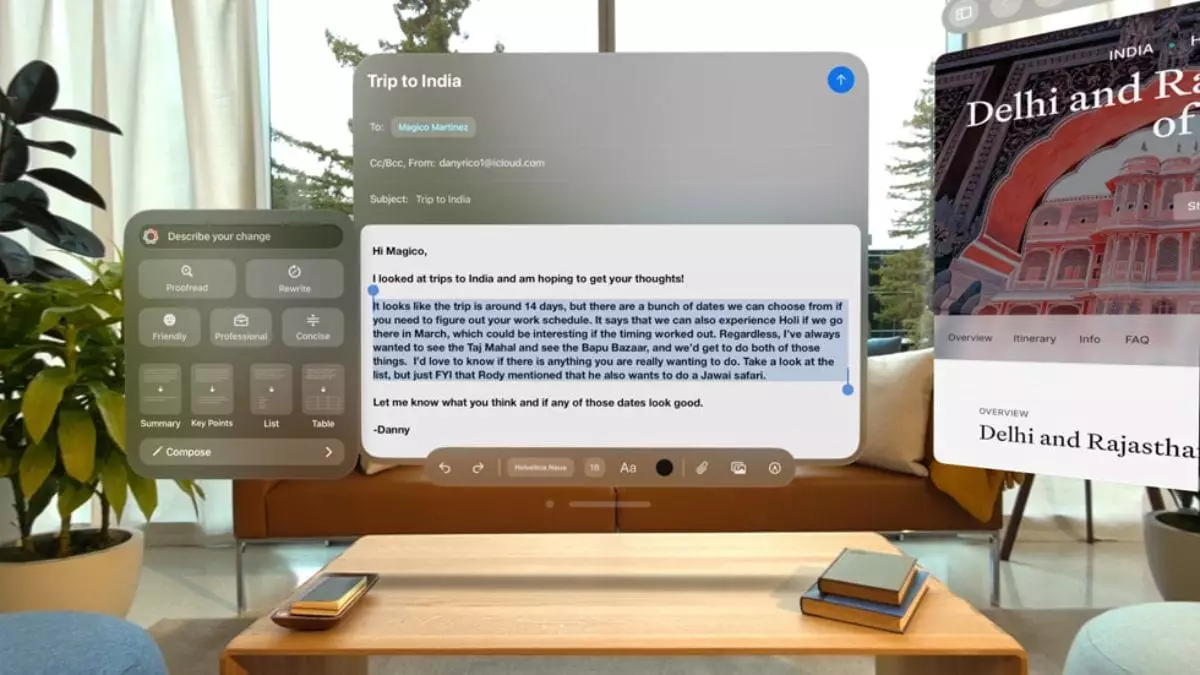The recent launch of the visionOS 2.4 update for Apple’s Vision Pro is not merely an incremental improvement; rather, it is a fearless leap into the future of mixed reality (MR) technology. By introducing a suite of Apple Intelligence features, this update transforms how users interact with their devices, elevating the mundane task of photo management and document editing into an engaging experience. It’s a bold statement in a crowded market, marking Apple’s commitment to maintaining its edge in innovation.
Revolutionary Writing Tools
Among the standout features, the Writing Tools scream both ambition and practicality. Utilizing artificial intelligence, these tools allow users to not only craft but also refine their written work with incredible ease. Imagine the time saved by an AI that not only checks spelling and grammar but also summarizes lengthy texts and organizes ideas into cohesive lists or tables. This is not just a convenience; it changes the narrative of productivity. In a world where time is of the essence, Apple’s decision to integrate such sophisticated editing capabilities into a mixed-reality framework signifies a new approach to digital interaction that caters to the contemporary user’s needs.
Image Playground: A Creative Revolution
The Image Playground feature is equally significant, harnessing generative AI to inspire creativity in users. By allowing individuals to transform photos through artistic prompts, Apple isn’t merely enhancing photography; it is redefining the relationship between the user and the images themselves. This tool democratizes creativity, offering everyone the ability to become a virtual artist, unrestricted by traditional boundaries. Moreover, the inclusion of Genmoji taps into the communication revolution—where emojis have become an essential dialect of expression—granting users unparalleled flexibility in enhancing their digital conversations.
Smart Features for Instant Gratification
In an age marked by immediacy, functionalities like Smart Reply and Natural Language Search are perfect companions for a fast-paced life. By enabling users to command their digital environment with natural language, Apple is striving to simplify our interactions with technology. The notion of crafting a “Memory Movie” from personal photos, guided by AI that constructs narratives, evokes a sense of nostalgia while showcasing the human experience through a modern lens. However, one can’t help but question: are we at risk of becoming overly reliant on AI for capturing and constructing our memories?
Privacy in a Data-Driven World
Amidst this remarkable advancement, Apple maintains a strong narrative around user privacy—a particularly vital aspect for today’s tech-savvy consumers. Promising that users’ data remains private and is never shared, the company employs on-device processing where possible. As AI continues to expand its reach, ensuring that users can navigate these advancements without sacrificing their privacy is paramount. Apple’s strategy is commendable; however, the challenge ahead lies in sustaining trust as technology continues to evolve.
The visionOS 2.4 update is a testament to Apple’s foresight and capability in redefining user interaction with mixed reality. It boldly propels us into an era where creativity, productivity, and privacy can sustainably coexist. While the tools are undeniably powerful, the implications of leaning heavily on AI paint a complex picture that warrants reflection from users and industry leaders alike.


Leave a Reply